Klein Tools NCVT-1P Handleiding
Klein Tools
Meetapparatuur
NCVT-1P
Bekijk gratis de handleiding van Klein Tools NCVT-1P (4 pagina’s), behorend tot de categorie Meetapparatuur. Deze gids werd als nuttig beoordeeld door 97 mensen en kreeg gemiddeld 4.4 sterren uit 49 reviews. Heb je een vraag over Klein Tools NCVT-1P of wil je andere gebruikers van dit product iets vragen? Stel een vraag
Pagina 1/4

• Non-contact detection of voltage in cables, cords, circuit breakers, lighting xtures, switches, outlets, and wires
• High intensity, bright green LED indicates the tester is
operational and aids in illuminating the workspace
• When voltage is detected, a high intensity, bright red LED illuminates and a beeping sound is generated
• Auto power-off feature conserves and extends battery life
• CAT IV 1000 Volt rating provides expanded operation and protection
• 50 to 1000 Volt AC power operating range allows broad application
• Detecta voltaje sin contacto en cables, cables conductores, cortacircuitos, accesorios de iluminación, interruptores,
tomas y alambres
• Un potente LED de color verde brillante indica que el probador está en funcionamiento y ayuda a iluminar el espacio de trabajo
• Cuando se detecta voltaje, se enciende un potente LED de color rojo brillante y se oye un indicador sonoro
• La función de apagado automático preserva y prolonga la vida útil de las pilas
• La clasi cación CAT IV 1000 V ofrece amplia capacidad de operación y protección
• Dado su rango de operación de 50 a 1000 V CA, el instrumento es apto para una variedad de aplicaciones
• Permet de détecter la tension sans contact dans les câbles, les
• cordons, les disjoncteurs, les luminaires, les interrupteurs, les prises et les ls
• La DEL verte à haute intensité indique que le testeur est en fonction et permet aussi d’éclairer l’espace de travail
• Lorsqu’une tension est détectée, une DEL rouge à haute intensité s’allume et l’appareil produit un bip
• La fonctionnalité d’arrêt automatique permet d’économiser la pile et d’augmenter sa durée de vie
• Avec sa classi cation CAT IV 1000 volts, ce testeur offre une gamme étendue de fonctionnalités et une protection
accrue
• La plage de 50 à 1000 volts ca permet une utilisation générale
NCVT-1P
INSTRUCTIONS – Non-Contact Voltage Tester (English: Page 2)
INSTRUCCIONES – Probador de voltaje sin contacto (Español: página 3)
INSTRUCTIONS – Testeur de tension sans contact (Français : page 4)
ENGLISH
1. Tip
2. LEDs
3. Tester body
4. Power button
5. Battery cap
6. Locking tab
7. 2x AAA batteries (included)
NOTE: There are no user-
serviceable parts inside
tester.
ESPAÑOL
1. Punta
2. LED
3. Cuerpo del probador
4. Botón de encendido
5. Tapa del compartimiento
debaterías
6. Pestaña de cierre
7. 2baterías AAA (incluidas)
NOTA: El probador no contiene
en su interior piezas que el
usuario pueda reparar.
FRANÇAIS
1. Pointe
2. DEL
3. Boîtier du testeur
4. Bouton de mise en marche
5. Couvercle du compartiment
à piles
6. Languette de verrouillage
7. 2pilesAAA (comprises)
REMARQUE: Ce testeur
ne contient aucune pièce
réparable par l’utilisateur.
DURABILITY / DURABILIDAD / DURABILITÉ
Drop Protection / Protección ante caídas / Protection contre les chutes 6.6 ft.
(2 m)
Safety Rating / Clasificación de seguridad / Cote de sécurité CAT IV
1000V
SYMBOLS ON TESTER
Risk of danger. It is important that users of this tester read, understand, and follow all warnings, Important information:
cautions, safety information, and instructions in this manual before operating or servicing this tester. Failure to follow
instructions could result in death or serious injury.
Risk of electric shock.
Read instructions.
Double insulated.
CAT
IV
For measurements performed at the source of low-voltage installation and outside lines.
FIG. 1
1
6
4
3
2
5
7

ENGLISH
CUSTOMER SERVICE
KLEIN TOOLS, INC.
450 Bond Street, Lincolnshire, IL 60069
1-800-553-4676
customerservice@kleintools.com
www.kleintools.com
OPERATING INSTRUCTIONS
TURN UNIT ON
Press and hold the power button
4
for ½ second, then release.
Listen for single-beep sound and watch for the green LED
2
to
illuminate.
TURN UNIT OFF
Press and hold the power button
4
for ½ second. Listen for a double-beep
sound and watch for the “power on” green LED
2
to
turn off.
SILENT MODE
The tester can be operated with only visual indication of voltage. With the
tester powered off, press and hold the power button
4
until the green LED
2
illuminates, then release.
SYSTEM SELF-TEST
The “power on” green LED
2
visually confirms battery sufficiency, system
integrity, and operation/active mode.
CHECKING FOR THE PRESENCE OF AC VOLTAGE:
Prior to use, test on known live circuit to verify tester functionality. Place tip
1
of the tester near an AC voltage source. When 50V to 1000V voltage is detected,
the tester will emit a high-pitched continuous beep, and the red LED
2
will
illuminate.
AUTO POWER-OFF
After 4 minutes of non-use, the tester automatically powers off to conserve
battery life.
BATTERY REPLACEMENT
Should one of the following scenarios occur, the batteries must be replaced:
SCENARIO 1: When powering on the tester: The “power on” LED in the tip
of the tester changes from a steady green to a blinking green and a series of
beeping sounds is generated, the tester then turns off.
SCENARIO 2: When operating the tester: The LEDs dim and the tone fades.
To replace the batteries:
1. Press the locking tab
6
inward and remove the battery cap
5
.
2. Remove and recycle the two spent AAA batteries.
3. Install two new AAA batteries, with the positive (+) side facing into
the tester as shown
7
.
4. Slide the battery cap onto the tester until it snaps back into place.
CAUTION
• DO NOT attempt to repair this tester. It contains no serviceable parts.
• DO NOT expose tester to extremes in temperature or high humidity.
SYMBOLS ON TESTER
Risk of danger. It is important that users Important information:
of this tester read, understand, and follow all warnings, cautions,
safety information, and instructions in this manual before operating
or servicing this tester. Failure to follow instructions could result in
death or serious injury.
Risk of electric shock.
Read instructions.
Double insulated.
CAT
IV
For measurements performed at the source of low-voltage
installation and outside lines.
WARNINGS
To ensure safe operation and service of the tester, follow these instructions.
Failure to observe these warnings can result in severe injury or death.
• It is important that users of this tester read, understand, and follow all warnings,
cautions, safety information, and instructions in this manual before operating or
servicing this tester. Failure to follow instructions could result in death or serious injury.
• Risk of electric shock and burn. Contact with live circuits could result in death or serious injury.
• Use caution with voltages above 30V AC as a shock hazard may exist.
• A blinking or steady red glow and an audible beep indicate voltage present. If no
indication, voltage could still be present.
• Before and after each use, verify operation by testing a known working circuit that is
within the rating of this unit.
• Never assume neutral or ground wires are de-energized. Neutrals in multi-wire branch
circuits may be energized when disconnected and must be retested before handling.
• The tester detect voltage if:WILL NOT
• The wire is shielded.
• The operator is not grounded or is otherwise isolated from an effective earth ground.
• The voltage is DC.
• The tester MAY NOT detect voltage if:
• The user is not holding the tester.
• The user is insulated from the tester with a glove or other materials.
• The wire is partially buried or in a grounded metal conduit.
• The tester is at a distance from the voltage source.
• The field created by the voltage source is blocked, dampened, or otherwise interfered with.
• The frequency of the voltage is not a perfect sine wave between 50 and 500Hz.
• The tester is outside of operation conditions (listed in Specifications section).
• Operation may be affected by differences in socket design and insulation thickness and
type; tester may not be compatible with some types of standard or tamper resistant (TR)
electrical outlets.
• In bright light conditions, the LED visual indicators will be less visible.
• Do not use if “power on” LED is not illuminated.
• Do not use if tester appears damaged or if the tester is not operating properly. If in
doubt, replace the tester.
• Do not apply more than the rated voltage as marked on the tester (1000 volts AC).
• Do not apply to uninsulated hazardous live conductors.
• Detection above 50V is specified under “normal” conditions as specified below. The tester
may detect at a different threshold at different conditions, or may not detect at all unless:
• The tip of the tester is within 0.25" of an AC voltage source radiating unimpeded.
• The user is holding the body of the tester with his or her bare hand.
• The user is standing on or connected to earth ground.
• The air humidity is nominal (50% relative humidity).
• The tester is held still.
• Always wear approved eye protection.
• Comply with local and national safety requirements.
• If this product is used in a manner not specified by the manufacturer, protection
provided by the product may be affected.
GENERAL SPECIFICATIONS
• Test
er Type: Non-contact voltage detector
• Voltage Range: 50 – 1000V AC
• Frequency Range: 50 – 500Hz
• Operating Altitude: 2,000 meters (6,561 feet)
• Relative Humidity: < RH 80% non-condensing
• Operating Temperature: 32 to 104°F (0° to 40°C)
• Storage Temperature: 32 to 104°F (0° to 40°C)
• Power: 2 x 1.5V AAA batteries (included)
• Dimensions: 6" x 0.96" x 1.16" x (152 x 24 x 29 mm)
• Weight: 2.5 oz. (72 grams)
• Drop Protection: 6.6 ft. (2 m)
• Safety Rating: CAT IV 1000V
• Pollution Degree: 2
• Standards: Conforms to UL STD. 61010-1, 61010-2-030
Certied to CSA STD. C22.2 No. 61010-1, 61010-2-030.
Specifications subject to change.
CLEANING
Be sure tester is turned off and wipe with a clean, dry lint-free cloth.
Do not use abrasive cleaners or solvents.
STORAGE
Remove the batteries when not in use for a prolonged period of time. Do
not expose to high temperatures or humidity. After a period of storage
in extreme conditions exceeding the limits mentioned in the General
Specifications section, allow the tester to return to normal operating
conditions before using.
DISPOSAL / RECYCLE
Do not place equipment and its accessories in the trash.
Items must be properly disposed of in accordance with
local regulations. Please see for additional epa.gov/recycle
information.

INSTRUCCIONES DE OPERACIÓN
ENCENDIDO DE LA UNIDAD
Mantenga presionado el botón de encendido
4
durante ½ segundo, y luego
suéltelo.
Preste atención si oye un único indicador sonoro y si se enciende el LED
verde
2
.
APAGADO DE LA UNIDAD
Mantenga presionado el botón de encendido
4
durante ½ segundo. Preste atención
si oye un indicador que sonará dos veces y si se apaga el LED verde encendido de
2
.
MODO SILENCIOSO
Es posible usar el probador con indicaciones visuales de voltaje únicamente. Apague el
probador y mantenga presionado el botón de encendido
4
hasta que se encienda el
LED verde
2
, luego suéltelo.
AUTOPRUEBA DEL SISTEMA
El LED verde de encendido
2
confirma visualmente la carga suficiente de la batería,
la integridad del sistema y el modo de funcionamiento/activo.
VERIFICACIÓN DE PRESENCIA DE VOLTAJE CA:
Antes de utilizarlo, realice pruebas en circuitos activos para comprobar que el
probador funciona. Coloque la punta
1
del probador cerca de una fuente de voltaje
CA. Cuando el probador detecte un voltaje de 50 a 1000VCA, emitirá un indicador
sonoro continuo de alta frecuencia, y el LED rojo
2
se encenderá.
FUNCIÓN DE APAGADO AUTOMÁTICO
Después de 4minutos sin usar, el probador se apaga automáticamente para preservar
la vida útil de las baterías.
SERVICIO AL CLIENTE
KLEIN TOOLS, INC.
450 Bond Street, Lincolnshire, IL 60069
1-800-553-4676
customerservice@kleintools.com
www.kleintools.com
REEMPLAZO DE LAS BATERÍAS
Si ocurre alguna de las siguientes situaciones, se deben remplazar las baterías:
SITUACIÓN 1: al encender el probador: el LED de encendido que se encuentra en la
punta del probador cambia de verde permanente a verde intermitente, y se oye una
serie de indicadores sonoros. Luego, el probador se apaga.
SITUACIÓN 2: al operar el probador: las luces LED se atenúan y el tono se desvanece.
Para remplazar las baterías:
1. Presione la pestaña de cierre
6
hacia dentro y retire la tapa del
compartimento de las baterías
5
.
2. Retire y recicle las dos baterías AAA agotadas.
3. Instale dos baterías AAA nuevas con el lado positivo (+) orientado hacia
el probador, como se muestra
7
.
4. Deslice la tapa del compartimento de baterías en el probador hasta que
calce nuevamente en su lugar.
PRECAUCIÓN
• NO intente reparar el probador. Incluye piezas no reparables.
• NO exponga el probador a condiciones de temperatura extrema o de humedad alta.
SÍMBOLOS DEL PROBADOR
Riesgo de peligro. : Es importante que Información importante
el usuario de este probador lea, comprenda y respete todas
las advertencias, precauciones, instrucciones e información
de seguridad incluidas en este manual, antes de poner en
funcionamiento el probador o de realizarle servicios de
mantenimiento. El incumplimiento de estas instrucciones puede dar
lugar a lesiones graves o mortales.
Riesgo de choque eléctrico.
Lea las instrucciones.
Doble aislamiento.
CAT
IV
Para mediciones realizadas en la fuente de la instalación de bajo
voltaje y líneas externas.
ESPAÑOL
LIMPIEZA
Asegúrese de que el probador esté apagado y límpielo con un paño limpio,
seco, que no deje pelusas.
No utilice solventes ni limpiadores abrasivos.
ALMACENAMIENTO
Retire las baterías si no va a utilizar el instrumento durante un tiempo
prolongado. No lo exponga a la humedad ni a altas temperaturas. Luego de un
período de almacenamiento en condiciones extremas que sobrepasen los límites
mencionados en la sección Especificaciones generales, deje que el probador
vuelva a las condiciones de funcionamiento normales antes de utilizarlo.
ELIMINACIÓN/RECICLAJE
No arroje el equipo ni sus accesorios a la basura. Los elementos
se deben desechar correctamente de acuerdo con las regulaciones
locales. Visite para obtener más información.epa.gov/recycle
ADVERTENCIAS
Para garantizar un funcionamiento y servicio seguros del probador, siga estas instrucciones.
El incumplimiento de estas advertencias puede provocar lesiones graves o la muerte.
• Es importante que el usuario de este probador lea, comprenda y respete todas las
advertencias, precauciones, instrucciones e información de seguridad incluidas
en este manual, antes de poner en funcionamiento el probador o de realizarle
servicios de mantenimiento. El incumplimiento de estas instrucciones puede dar
lugar a lesiones graveso mortales.
• Riesgo de choque eléctrico y quemaduras. El contacto con los circuitos activos
podría causar lesiones graves o mortales.
• Tenga precaución con los voltajes superiores a 30V CA p3-ya que podría existir riesgo
de choque eléctrico.
• Una luz roja intermitente o continua y un indicador sonoro indican que hay voltaje.
Aunqueno haya indicación, es posible que haya voltaje.
• Antes y después de cada uso, verifique el funcionamiento realizando una prueba en
un circuito activo que se encuentre dentro de la capacidad de esta unidad.
• Nunca suponga que los cables neutro y de puesta a tierra están desenergizados.
Los cables neutros en circuitos derivados de cables de múltiples alambres pueden
estar energizados aún cuando estén desconectados y deben volver a probarse
antes de su manipulación.
• El probador detectará voltaje en las siguientes situaciones:NO
• Si el cable está blindado.
• Si el operador no está conectado a tierra o está aislado de alguna manera de una
toma detierra efectiva.
• Si el voltaje es de CC.
• Es posible que el probador detecte voltaje en las siguientes situaciones:NO
• El usuario no sostiene el probador.
• El usuario está aislado del probador con un guante u otro material.
• El cable está parcialmente enterrado o en un conducto de metal conectado a tierra.
• El probador se encuentra a cierta distancia de la fuente de voltaje.
• El campo creado por la fuente de voltaje está bloqueado, amortiguado o
sometido a interferencia de alguna otra manera.
• La frecuencia de voltaje no es una onda sinusoidal perfecta entre 50Hz y 500 Hz.
• El probador no se encuentra dentro de las condiciones de funcionamiento
(descritas en lasección Especificaciones).
• El funcionamiento puede verse afectado por diferencias en el diseño de las tomas y
el tipo yespesor del aislamiento; el probador puede no ser compatible con algunos
tipos de tomacorrientes estándar o inviolables.
• En condiciones de mucha luz, los indicadores visuales LED serán menos visibles.
• No use el probador si el LED de encendido no se ilumina.
• No use el probador si parece dañado o si no funciona correctamente. Si tiene
dudas, reemplace el probador.
• No aplique voltaje nominal mayor que el indicado en el probador (1000V CA).
• No lo utilice sobre conductores activos peligrosos sin aislamiento.
• La detección por encima de 12V se especifica en condiciones “normales” como
se indica másadelante. El probador puede detectar voltaje a un umbral diferente,
en condiciones diferentes, o puede no detectar ningún voltaje, a menos que se
cumplan las siguientes condiciones:
• La punta del probador está dentro de 0,25" de una fuente de voltaje de CA que
irradia sinimpedimento.
• El usuario sostiene el cuerpo del probador con la mano descubierta.
• El usuario está parado sobre una toma de tierra o conectado a ella.
• La humedad del aire es nominal (50% de humedad relativa).
• El probador se mantiene quieto.
• Siempre debe usar protección para ojos aprobada.
• Cumpla con los requerimientos locales y nacionales de seguridad.
• Si este producto se usa de una manera contraria a lo especificado por el
fabricante, la protección proporcionada por el producto puede verse afectada.
ESPECIFICACIONES GENERALES
• Tipo
de probador: detector de voltaje sin contacto
• Rango de voltaje: 50 a 1000VCA
• Rango de frecuencia: 50 a 500Hz
• Altitud de funcionamiento: 2000m (6561')
• Humedad relativa: < 80% HR, sin condensación
• Temperatura de operación: 32°F a 104°F (0°C a 40°C)
• Temperatura de almacenamiento: 32°F a 104°F (0°C a 40°C)
• Potencia: 2baterías AAA de 1,5V (incluidas)
• Dimensiones: 6" × 0,96" × 1,16" (152 × 24 × 29mm)
• Peso: 2,5oz (72g)
• Protección ante caídas: 6,6' (2m)
• Clasicación de seguridad: CATIV 1000V
• Grado de contaminación: 2
• Normas: Cumple con las siguientes: UL STD. 61010-1, 61010-2-030
Certicado según las normas: CSA STD. C22.2 No. 61010-1, 61010-2-030.
Especificaciones sujetas a cambios.
Product specificaties
| Merk: | Klein Tools |
| Categorie: | Meetapparatuur |
| Model: | NCVT-1P |
Heb je hulp nodig?
Als je hulp nodig hebt met Klein Tools NCVT-1P stel dan hieronder een vraag en andere gebruikers zullen je antwoorden
Handleiding Meetapparatuur Klein Tools
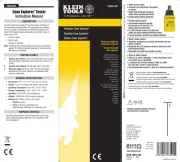
8 Juli 2025
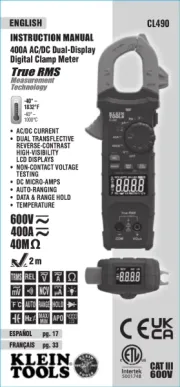
14 April 2025

13 Januari 2025

13 Januari 2025

18 November 2024

12 November 2024

24 September 2024

21 September 2024

21 September 2024

18 Juni 2024
Handleiding Meetapparatuur
- Homedics
- Werma
- Alecto
- KS Tools
- RK Technology
- Owon
- Technics
- TDE Instruments
- HT Instruments
- Dostmann Electronic
- Oregon Scientific
- P3 International
- Pyle
- RIDGID
- Blackmagic Design
Nieuwste handleidingen voor Meetapparatuur
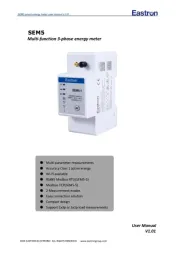
29 Juli 2025
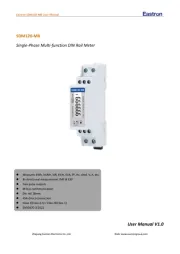
29 Juli 2025
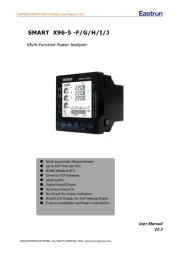
29 Juli 2025

29 Juli 2025
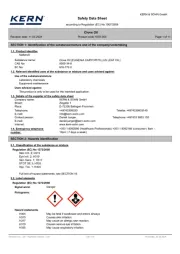
29 Juli 2025
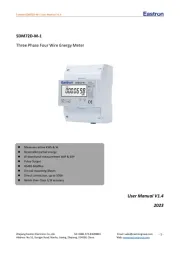
29 Juli 2025
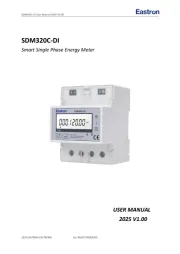
28 Juli 2025
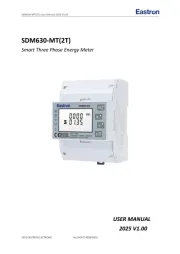
28 Juli 2025
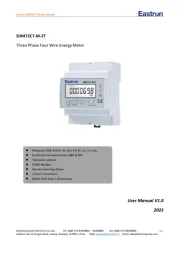
28 Juli 2025
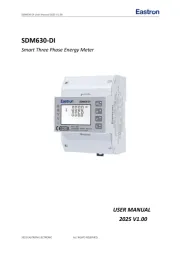
28 Juli 2025